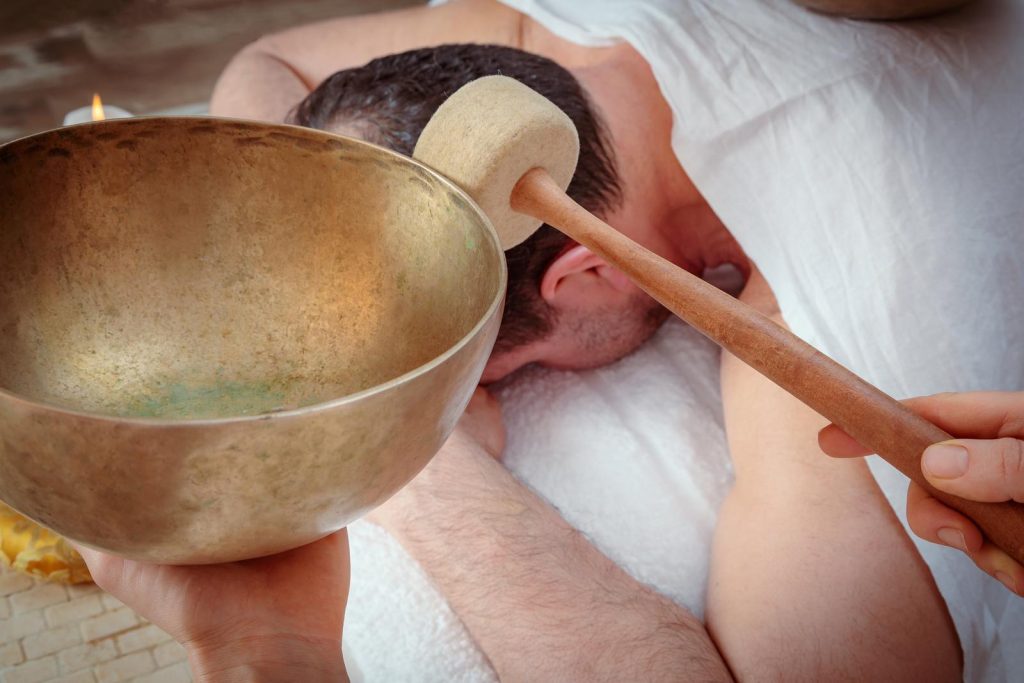The Influence of Music on the Sensory Experience of Bath Meditation

Understanding the Depth of Bath Meditation
Bath meditation transcends the mere act of soaking in water; it transforms into a holistic experience that harmonizes the body, mind, and soul. The magic of this practice lies in its ability to anchor the individual firmly in the present moment while promoting relaxation and emotional healing. By integrating music, bath meditation evolves into a multi-sensory journey, enriching the meditator’s experience significantly. Enthusiasts across the globe have embraced this practice, discovering it as a powerful tool for introspection and restoration.
In Nigeria, a nation celebrated for its rich tapestry of traditional and contemporary music, the choice of auditory accompaniment can profoundly influence one’s meditative state. Here are several aspects that highlight this relationship:
- Connection to Culture: Music plays an integral role in the lives of many Nigerians. The rhythmic enchantment of local genres such as juju, characterized by its lively beats and melodic vocal lines, can create an uplifting atmosphere, while highlife, with its easy-going grooves, fosters a feeling of calm. Engaging with culturally resonant sounds allows practitioners to feel connected to their heritage, enhancing the meditative journey.
- Emotional Resonance: The inherent ability of music to evoke emotions is particularly vital in meditation. For instance, the song of the talking drum can evoke a deep sense of nostalgia or joy, helping meditative participants tap into their emotional landscape. When one immerses themselves into a soothing soundscape, the meditative experience becomes more profound and personal, aiding in emotional release and clarity.
- Choice of Genre: The selection of music is central to the quality of meditation. Instrumental tracks or sounds of nature, such as the chirping of birds or the gentle flow of water, can create a serene and peaceful environment ideal for relaxation. Conversely, more vibrant Nigerian songs may rejuvenate one’s spirit, transforming the experience into one of empowerment and joy, invigorating the practitioner for the rest of their day.
The intricate interplay of music and bath meditation invites enthusiasts to engage fully, creating an enriched sensory experience that transcends the ordinary. This article will delve deeper into the relationship between sound and meditative practices, examining how various soundscapes can turn a simple bathing routine into a quest for self-discovery.
Join us as we explore how sound can elevate your bath meditation experience, offering new insights and techniques that can profoundly enhance your overall well-being. Embrace this opportunity to understand the powerful impact of merging traditional sounds with meditative practices in Nigeria, revealing both historical backgrounds and modern practices that can illuminate your path to serenity.
ADDITIONAL INSIGHTS: Expand your understanding here

The Role of Soundscapes in Bath Meditation
In the realm of bath meditation, the integration of music serves as a potent catalyst that elevates the overall sensory experience. The sounds we choose to accompany our relaxation rituals can shape the atmosphere, guiding us towards either deep introspection or vibrant rejuvenation. Understanding the nuances of how sound influences meditation allows practitioners to curate their own unique experiences—a journey that not only soothes the body but deeply resonates with the soul.
Creating Atmosphere
The ambiance in which we meditate greatly affects our state of mind. Music has the unparalleled ability to transport us to different realms of consciousness, profoundly influencing our sensory perception. In Nigeria, local musicians use traditional instruments to create soundscapes that echo the essence of nature and culture. For instance, the talking drum provides a rhythmic undertone that can mimic the heart’s pulse, fostering a deep sense of connection and grounding. Allowing this form of music to wash over you during a bath meditation can create an immersive environment, encouraging practitioners to align with the rhythm of their own body.
Temperature and Sound
The ambient temperature of the bathwater itself plays an essential role in our sensory experience, and when paired with music, it forms a multi-layered tapestry of relaxation. Research has shown that warm water bathing reduces tension while sound waves travel through water differently than through air, often feeling more profound and enveloping. Listening to soothing melodies while soaking in a warm bath can strengthen this sensation, making the overall experience not just relaxing, but transcendent. Various studies suggest that ambient music can significantly enhance feelings of warmth and comfort, which is why a gentle saxophone serenade or a sweeping orchestral piece might perfectly complement your meditative bath.
Sound Choice and Emotional Release
Navigating the vast landscape of musical genres allows individuals to tailor their bath meditation to their emotional and spiritual needs. Influences from genres like traditional folk music, which often convey stories of heritage and nostalgia, can offer practitioners a sense of belonging and unity with their ancestry. Meanwhile, contemporary instrumental pieces can create an ethereal experience, helping individuals detach from daily stressors and encouraging a journey of self-discovery. Some popular tracks include:
- Soft Jazz – to evoke a sense of calm and relaxation.
- Nigerian Highlife – offering a light and joyful atmosphere.
- Nature Sounds – enhancing the connection to the earth and natural surroundings.
By selecting music that resonates emotionally, practitioners not only enhance their bath meditation experience but also harness the therapeutic benefits of sound. It’s essential for individuals to explore various genres and find what resonates personally, as this choice is instrumental in guiding their meditation journey.
As we continue to unravel the intersection between music and bath meditation, the insights gained from understanding these dynamics will empower practitioners to enhance their rituals, ultimately leading to a deeper sense of well-being and tranquility.
| Advantages of Music in Bath Meditation | Details and Insights |
|---|---|
| Enhanced Relaxation | Music can significantly lower stress levels, promoting deeper relaxation during bath meditation sessions. |
| Improved Focus | Thoughtfully chosen music helps to block external distractions, enhancing mindfulness and concentration. |
| Emotional Release | Certain melodies elicit emotional responses, facilitating personal insight and emotional healing during meditation. |
| Increased Enjoyment | Integrating music makes the experience more enjoyable and fulfilling, encouraging regular practice. |
| Spiritual Connection | Music can enhance spiritual experiences by creating an atmosphere conducive to exploration and connection during meditation. |
Incorporating music into bath meditation is an exceptional way to amplify the overall sensory experience. When harmonized with the calming water, melodies flow and adapt, effortlessly guiding caregivers and practitioners alike into profound states of tranquility. Not only does music serve as a backdrop, but it also becomes a medium for emotional expression, unlocking facets of the self that might remain buried in silence. This dynamic element can perfectly synchronize with personal ambitions for healing or growth, an engaging journey where each tune offers a new horizon of understanding. Such depth invites individuals to dive deeper into their meditation practice, exploring the rhythm of their emotions in ways that surpass traditional bathing rituals. For those drawn to the meditative arts, understanding the influence of sound can transform the practice from a routine to an evocative experience.
YOU MAY ALSO LIKE: Read read another article
Music as a Therapeutic Tool
As we delve deeper into the relationship between music and bath meditation, it becomes clear that music functions not just as an accompaniment, but as a therapeutic tool that can enhance physical, emotional, and mental well-being. In Nigeria, where music is interwoven with cultural rites and healing practices, the role of sound in meditation cannot be overstated. Certain traditional melodies are known to evoke feelings of peace and relaxation, acting as vehicles for spiritual connection and self-reflection.
Healing Frequencies
The concept of healing frequencies suggests that specific sound waves can promote healing on a physiological level. Binaural beats, for instance, are often used in meditative practices to synchronize brain activity, leading to enhanced focus and clarity. These frequencies can encourage deep relaxation and even aid in pain relief during meditation sessions. In a bath setting, where the body is free from the weight of daily stress, these frequencies can resonate more profoundly, making them an excellent choice for those seeking to explore the depths of their sensory experience.
Cultural Resonance and Identity
In Nigeria, the significance of cultural context in music is vital. Traditional soundscapes that incorporate indigenous instruments such as the sekere or the shekere are rich with history and are often imbued with spiritual meaning. Listening to hymns from revered Yoruba artists or songs that echo the rhythms of the Niger Delta can invite a profound sense of cultural resonance. This connection can amplify the experience of bath meditation, where the blend of water and sound helps individuals tap into their roots, fostering a sense of belonging and identity.
The Transformative Power of Silence
While music undeniably elevates the sensory experience, it’s essential to recognize the role of silence as well. The contrast between sound and silence allows practitioners to delve deeper into their inner landscapes. After listening to calming music, taking moments of silence can facilitate self-reflection and insight. Silence encourages practitioners to process their emotions and thoughts, creating a balanced meditation environment. For many, this ebb and flow between music and silence in bath meditation not only enhances the overall experience but also leads to transformative states of consciousness.
Personalized Playlists for Meditation
Modern technology has opened new avenues for cultivating a personalized meditation experience. Platforms like Spotify and Apple Music offer curated playlists that target specific moods and intentions. In Nigeria, artists and producers have started crafting mixes specifically for meditative practices, allowing individuals to tap into local sounds while enjoying the benefits of tailored playlists. Popular choices might include songs that utilize traditional African instruments, such as the kora, alongside contemporary interpretations that delve into the soothing aspect of sound.
The experience of bath meditation can be enriched through intentional sound selection, encouraging practitioners to explore and create playlists that resonate with their personal journeys. Discovering the right combination of music, cultural references, and emotional triggers offers a path to deeper relaxation and fulfillment.
As we further explore the intricate connections between sound, culture, and meditation, there is a growing recognition that music need not be an afterthought; instead, it can serve as a transformative guide on the journey to self-discovery and wellness.
SEE ALSO: Click here to read another article
Conclusion
In conclusion, the intersection of music and bath meditation unveils a rich tapestry of sensory experiences that cater to the mind, body, and spirit. As we have explored, music serves as a therapeutic tool that transcends mere background noise, profoundly enhancing relaxation, emotional healing, and cultural connection. The infusion of healing frequencies, including practices like binaural beats, allows individuals to access deeper states of consciousness, making the meditative experience more impactful.
Moreover, the incorporation of traditional Nigerian sounds—imbued with history and cultural identity—adds a unique layer of significance to meditation practices. By intertwining the rhythms of the shekere or kora with modern interpretations, practitioners can foster a sense of belonging and grounding in their meditation journeys. This cultural resonance not only allows individuals to tap into their roots but also enriches the overall meditative experience.
It is also vital to recognize the transformative power of silence that allows practitioners to process emotions and achieve deeper self-reflection. The delicate balance between sound and silence creates a meditative rhythm that can lead to impactful insights and tranquility. Furthermore, with technology enabling personalized playlists, individuals can curate their sensory experiences in a way that aligns with their personal intentions and emotional needs.
As we continue to delve into the influence of music on the sensory experience of bath meditation, it becomes evident that sound has the potential to guide us on a path of self-discovery and wellness. Embracing these musical elements, whether traditional or contemporary, offers a unique way to enhance meditation, cultivate a deeper connection to self, and promote overall well-being. Dive into your own journey of exploration, and let the music elevate your bath meditation experience to new heights.



